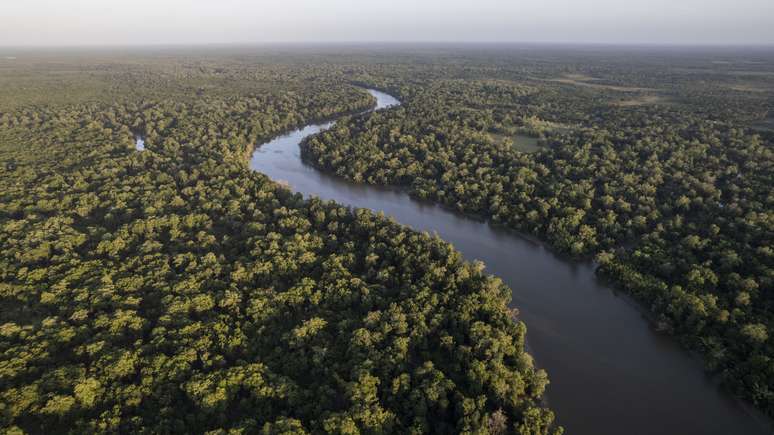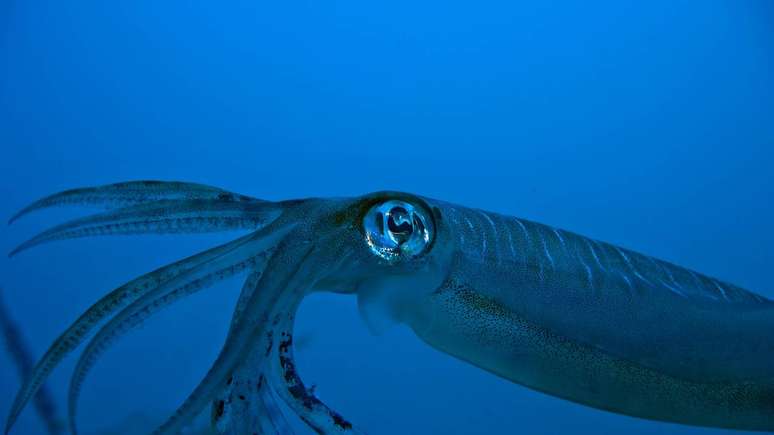According to researchers, the pink dolphin, found in the Amazon River, evolved from dolphins
The discovery of fossils of marine microorganisms in Amazon region confirms the hypothesis that, in times gone by, the environment of the largest tropical forest in the world could be repaired sea animals.
In a study conducted by geologist Lilian Maia Leandro, of the University of Vale do Rio dos Sinos (Unisinos), and published in Journal of Geology, who explored this hypothesis, contributing to the scientific understanding of the region, demonstrated that part of the Amazon basin was probably covered by ocean waters and that many animals, plants and other organisms lived in this region in the past.
In the study, it is estimated that during the Miocene period – approximately between 23 and 5 million years ago (find out more below) –, the mountains in the northwestern region of South America had not yet formed. This includes the Cordillera Mérida, which currently blocks the waters of the Caribbean Sea from entering the continent. In the past, when the ocean level was higher, the waters managed to penetrate, forming a gulf bringing diverse marine organisms to the region.
In an interview with EarthGuilherme Augusto Domenichelli, biologist and professor of Biology and Science at Colégios Arbos and São José in Santo André (SP), explained that the fossils were remains or preserved traces of a marine organism that died long ago.
“To become a fossil, it goes through several types of processes, called fossilization. The softer parts of animals, such as internal organs, decompose quickly, while the harder parts, such as bones, teeth and shells, resist much longer,” he explained.
According to the professor, these hard parts are buried by sediments, which consist of very small particles of rocks, such as sand. Over time, several layers of sediment accumulate around the bones, which begin to compact and harden, turning into rock.
“During this transformation of the layers of sediment into rock, the bones that were in the middle of this sediment are also transformed. The water present in the sediment penetrates the bones carrying minerals. These minerals dissolved in the water replace the original bones, leaving an exact copy. This is the most common fossilization process,” she added.
Traces of the past
Considered the largest river in the world, the Amazon River originates in Peru, crosses Colombia and flows on the northern coast of Brazil. Stretching between Bolivia, Ecuador, Venezuela, and Guyana, the Amazon Basin receives summer rainwater from the Northern and Southern Hemispheres thanks to tributaries on both sides.
In an interview with Earthgeologist Lilian Maia Leandro reported that the pink dolphinfound in the Amazon River, would have evolved from dolphins who inhabited the region due to past floods, which brought with them marine animals, separating populations and giving rise to new species adapted to river environments.
“One of the animals found in the river is the pink dolphin which, also according to studies, seems to have appeared in the sea; Their ancestors were dolphins and today they live in the rivers of the Amazon. In other words, flooding from seawater in the past helped bring these marine animals to the region,” she explained.
The rivers of the Amazon, with more acidic waters due to the abundance of organic matter, are home to a diversity of life adapted to these conditions. Fish and plants are examples of species adapted to this environment. Some native animals, such as freshwater stingrays, tucuxí dolphins and pink dolphins, have similarities to marine species.
“The research suggests the possibility that these animals descended from marine species that inhabited the region during the Miocene,” adds Guilherme Augusto Domenichelli.
What was the Miocene?
The Miocene, a period characterized by intense global geological activity, gave rise to the Himalayan mountain ranges in Asia, the Alps in Europe and the Andes in South America. Geologist André Oliveira Sawakuchi, researcher at the Institute of Geosciences (IGc-USP), highlights that, in the north-west of South America, some mountain ranges had not yet formed. This allowed the ocean to enter the continent, forming a gulf as the Caribbean Sea encroached on the western Amazon. This configuration created a communication channel between the Amazon region and the Caribbean, causing past floods that contributed to the arrival of marine animals and the birth of new species.
Source: Terra
Rose James is a Gossipify movie and series reviewer known for her in-depth analysis and unique perspective on the latest releases. With a background in film studies, she provides engaging and informative reviews, and keeps readers up to date with industry trends and emerging talents.







